On the trail of ghost brides and haunted villages
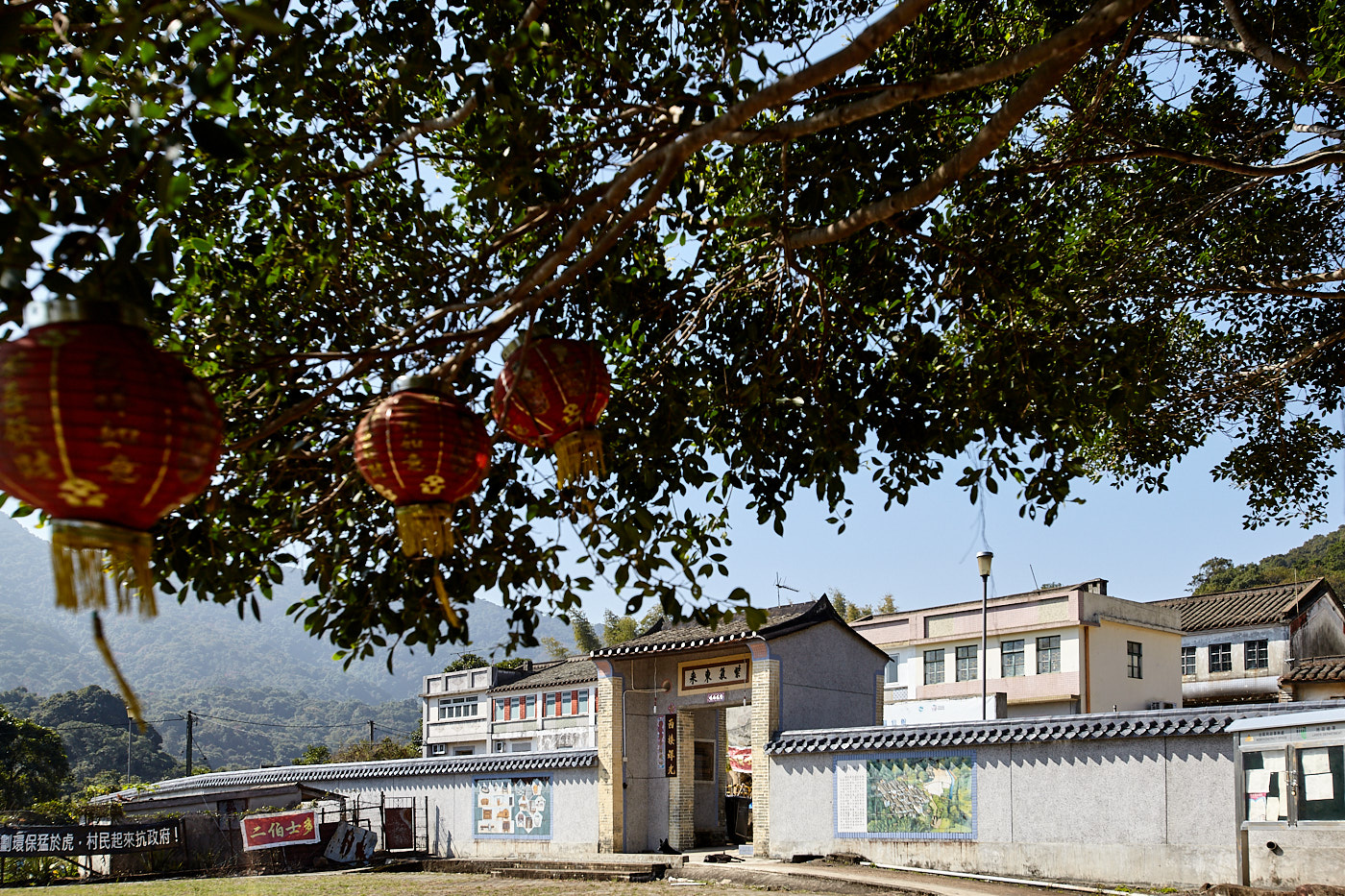
On the trail of ghost brides and haunted villages, a great hike in Plover Cove Country Park
Hong Kong, seen from Victoria Peak, has one of the most famous city skylines in the world. But there is another side of Hong Kong that is much less well known. Out of a total land area of 110,400 hectares, 43,455 of them, or around 39 percent, are protected country parks. Criss-crossing these parks is a fabulous network of trails that cover everything from leisurely family strolls to strenuous and lengthy hikes. And despite a population of over seven million it is possible to follow some of these trails for hours without seeing another human being.
One of the largest and most remote is the Plover Cove Country Park, which occupies an area of 4,594 hectares in the far northeast corner of the territory. Getting there takes a little planning but once there you’ll find marked and well-maintained paths through forest and over mountain. You’ll also find feral cattle, babbling streams, butterflies, mangroves and haunted villages.
There are numerous trails to follow but my favourite starts at the Bride’s Pool Nature Trail. Buses and taxis will stop by the car park in the right-hand corner where you’ll see a flight of steps. The nature trail officially starts a few metres further up the road but for a better view of the waterfall go down these steps one level then head left past the barbecue pits. At the end, you’ll see the falls tumbling into the Bride’s Pool at its base. A narrow fern-lined path leads downwards to a small bridge across the river. To the left, a small path gets you closer to the falls.
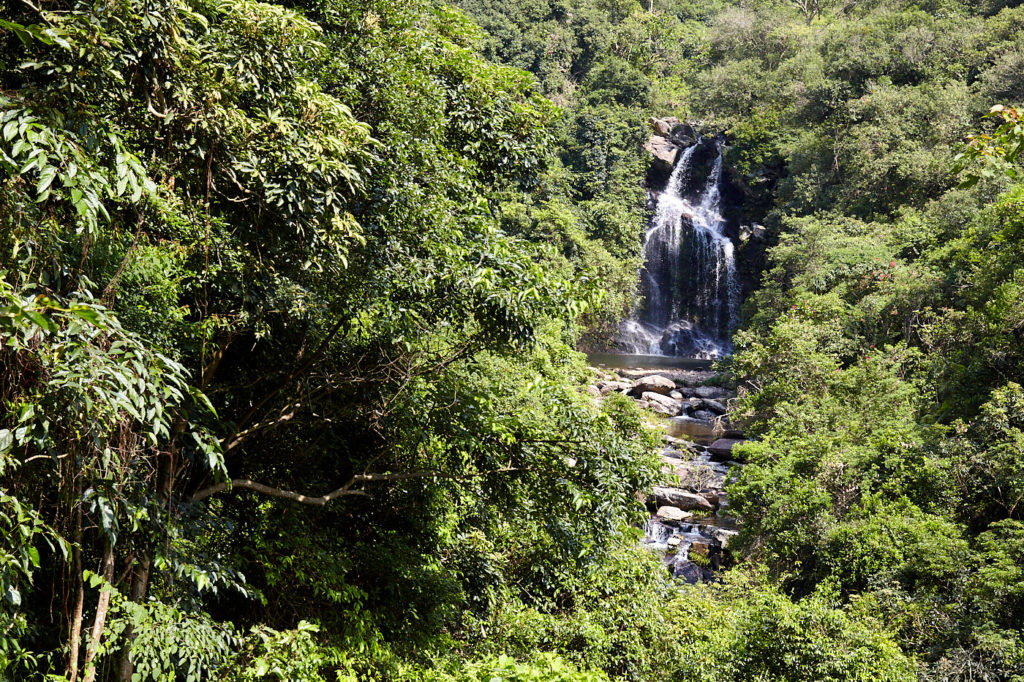
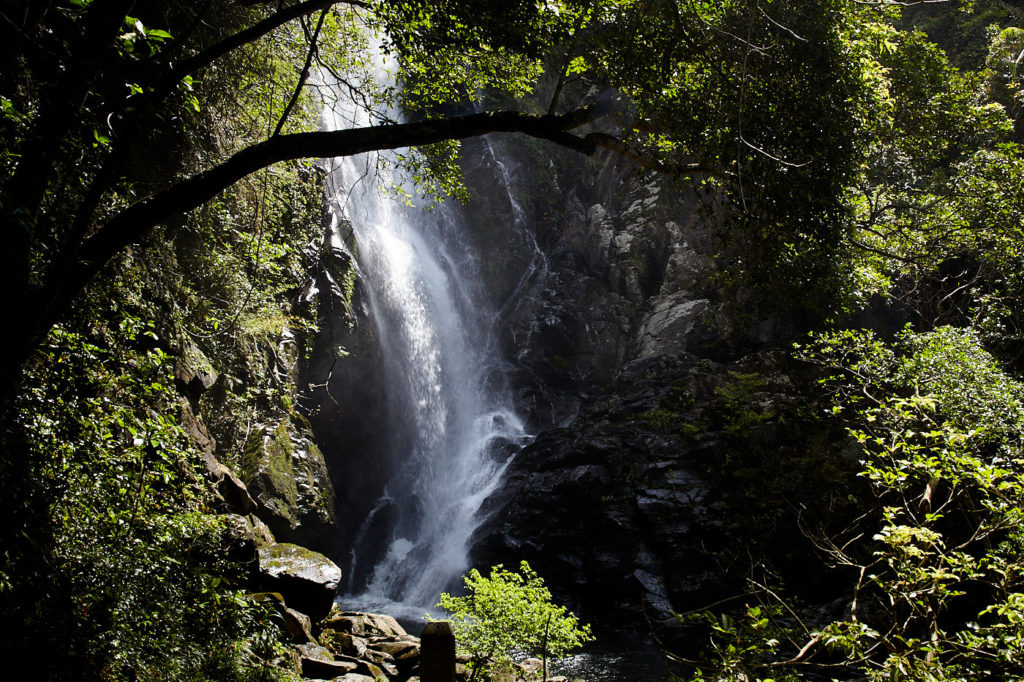
The waterfalls at Bride’s Pool (left) and Mirror Pool.
It is said that about a hundred years ago a bride-to-be was travelling from Wu Kau Tang to be married at Luk Keng. It was raining heavily when one of the porters carrying the sedan chair slipped on a rock. The bride and sedan were lost to the waterfall, her body later being found in the plunge pool below.
At another pool nearby villagers claimed they had seen her ghost combing its hair in the reflection on the water. Since then it has been known as Mirror Pool. From the bridge turn right and follow the path past an old stone bridge. The short walk leads to an even more impressive fall where the water crashes down over an almost sheer rock face into the pool below. But this path is a dead end and to continue we must return to, and cross over, the old stone bridge.
Read also: The Ping Shan Heritage Trail
We are actually heading for Wu Kau Tang, but a signpost nearby offers Chung Mei. We can follow this, keeping left when the trail forks. Climbing up a small hill and then ambling along the narrow shady path it’s easy to imagine the sedan chair hurrying towards you, the porters soaked to the skin and miserable, the frightened bride peering through the small window. Presently we arrive at the small car park at the end of Wu Kau Tang Road.
Tortoise Field
Wu Kau Tang itself is still inhabited. The name means “formidable dragon in motion” but originally it had simply been known as Tortoise Field, due to an abundance of the creatures in the area. So many, in fact, that when villagers built a wall to segregate the fields they mistook some tortoises for rocks. The next morning they discovered holes where the “rocks” had crawled away and the wall had to be rebuilt. After this, the villagers were mockingly called “tortoise people” at local markets. To end the humiliation village elders sought the advice of a scholar who bestowed the current name.
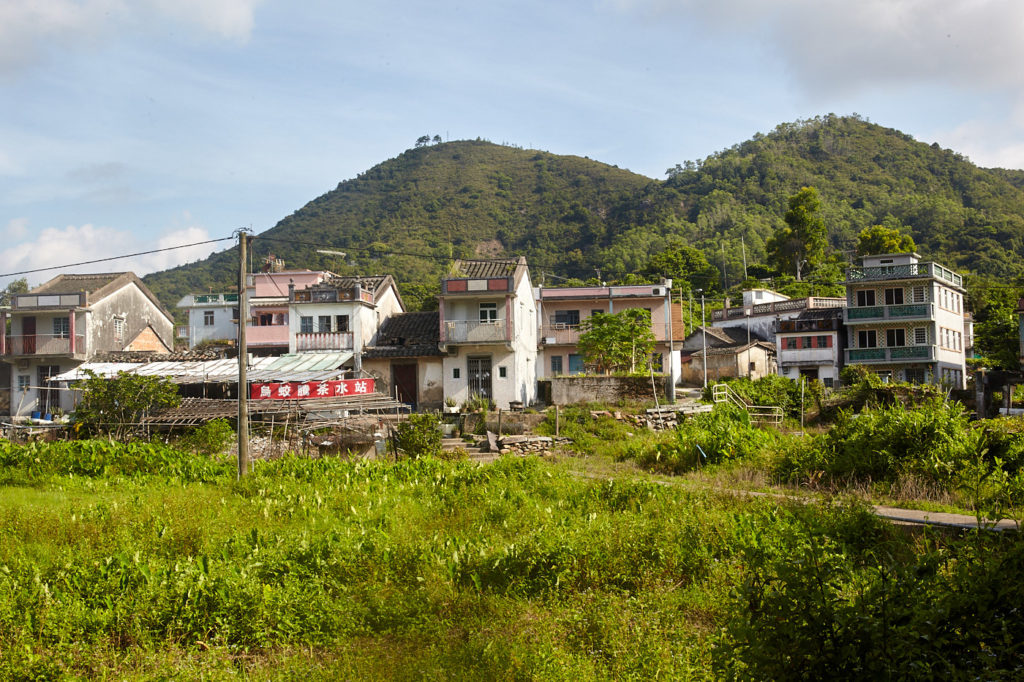
Wu Kau Tang village. A narrow path from the other side of the village leads up the hill to a pavilion where there are spectacular views of the surrounding countryside.
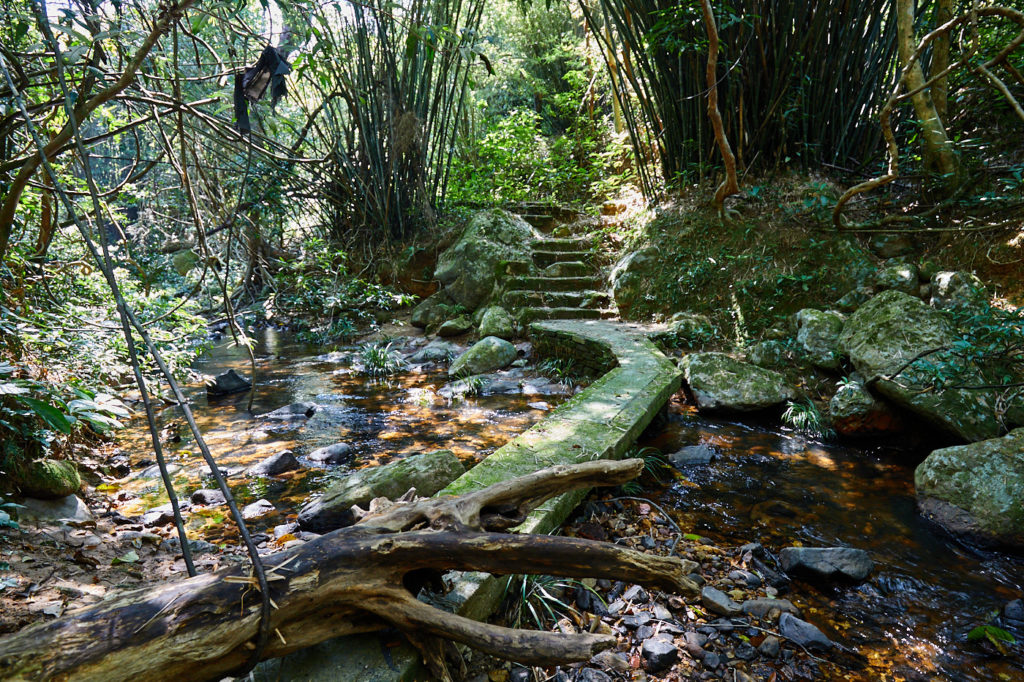
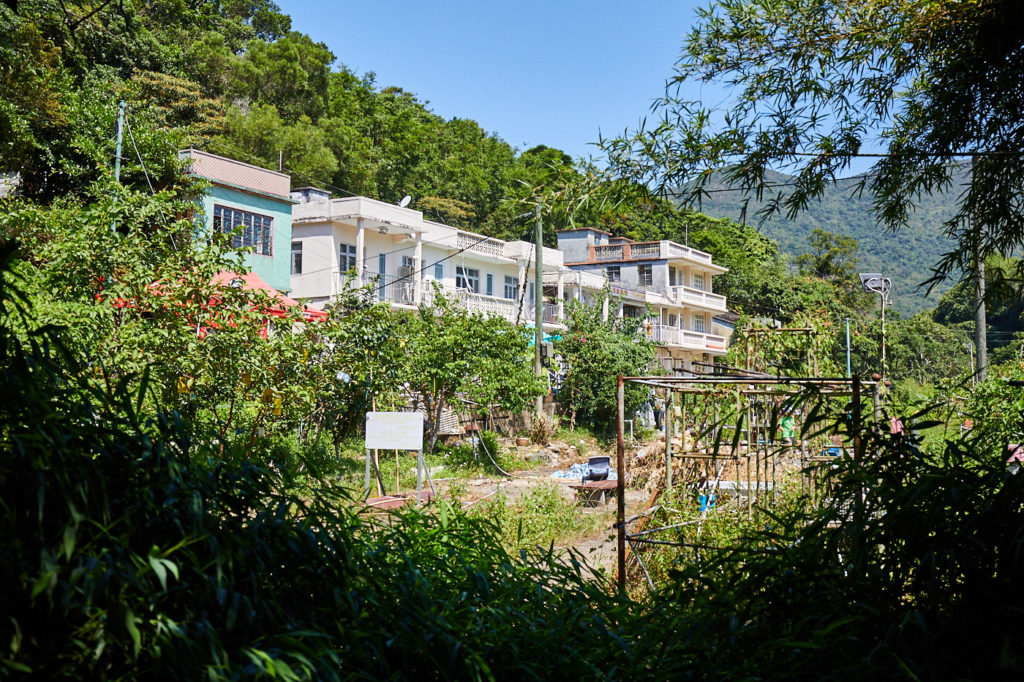
An intriguing side path on the way to Kau Tam Tso (left). It probably meets up with the Plover Cove Reservoir trail but since it doesn’t appear to be used much it is probably overgrown. Kau Tam Tso village (right).
You can follow the road to explore the village, or turn right over the little bridge and continue towards Kau Tam Tso. A concrete path follows the small river past huge clumps of old bamboo on the right with the overgrown and untended fields on the left.
Kau Tam Tso is a secluded row of once-neglected houses. Some of them have been partially renovated though one or two are still crumbling. The fields in front of the houses are untended and the children’s playground is little more than a rusty old climbing frame and some concrete seats
A short distance past Kau Tam Tso the path branches into three. The left branch leads to the house that was visible on the far side of the fields from Kau Tam Tso, the right leads to Tai Tung and a different adventure altogether. Take the middle path and keep going until you reach a row of bollards. These were installed, no doubt, to thwart mountain bikers whose wheels tend to erode the paths. It hasn’t worked, the bikes just go around them. The steps to the left lead to a 416-metre hill called Tui Tang Lung. To the right, the path follows the stream through the forest. This part of the walk is pleasantly shady enriched with butterflies and dragonflies flitting about in the dappled light.
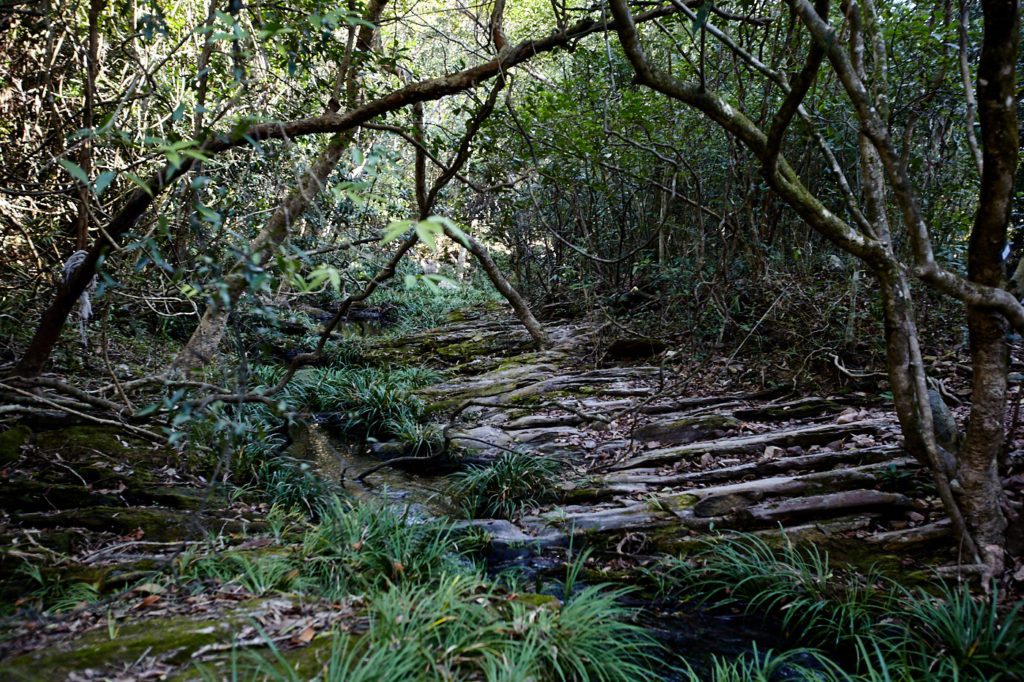
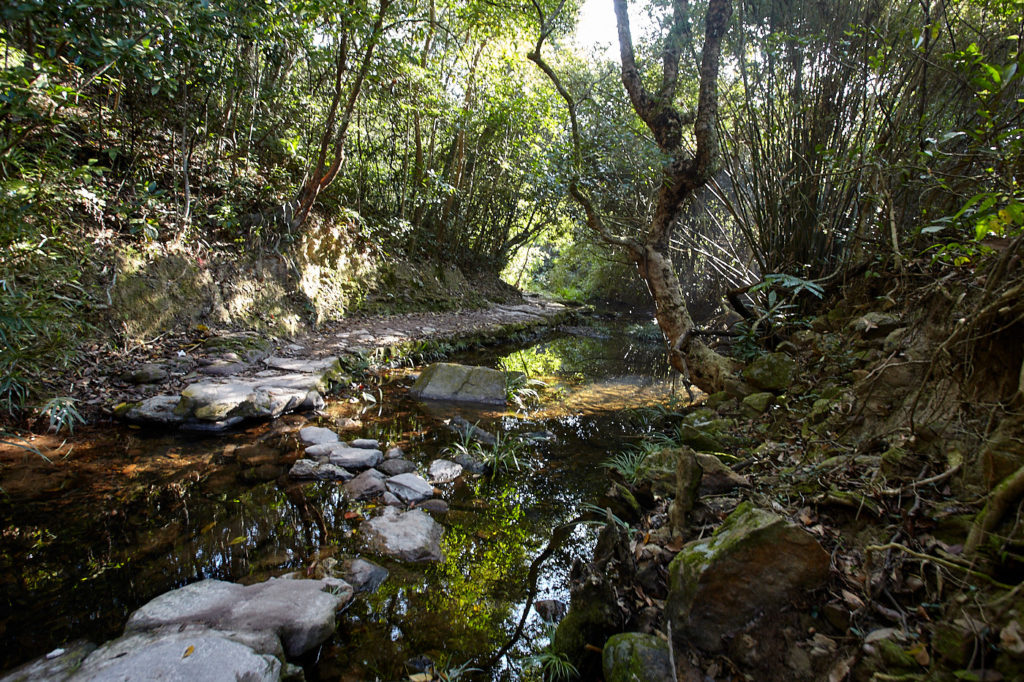
The trail follows the stream gently downhill until it meets the sea.
Be sure to keep an eye peeled for the huge golden orb weavers. These spiders get their name from the golden sheen of the adults’ webs. They are also the largest and strongest webs of any spider in the world. On summer weekdays when hikers are few and far between they have been known to stretch up to a metre right across the path so you either have to crash through it or limbo underneath.
Other wildlife in the vicinity includes wild boar, muntjac and porcupine but although you can sometimes hear them in the undergrowth they are rarely seen.
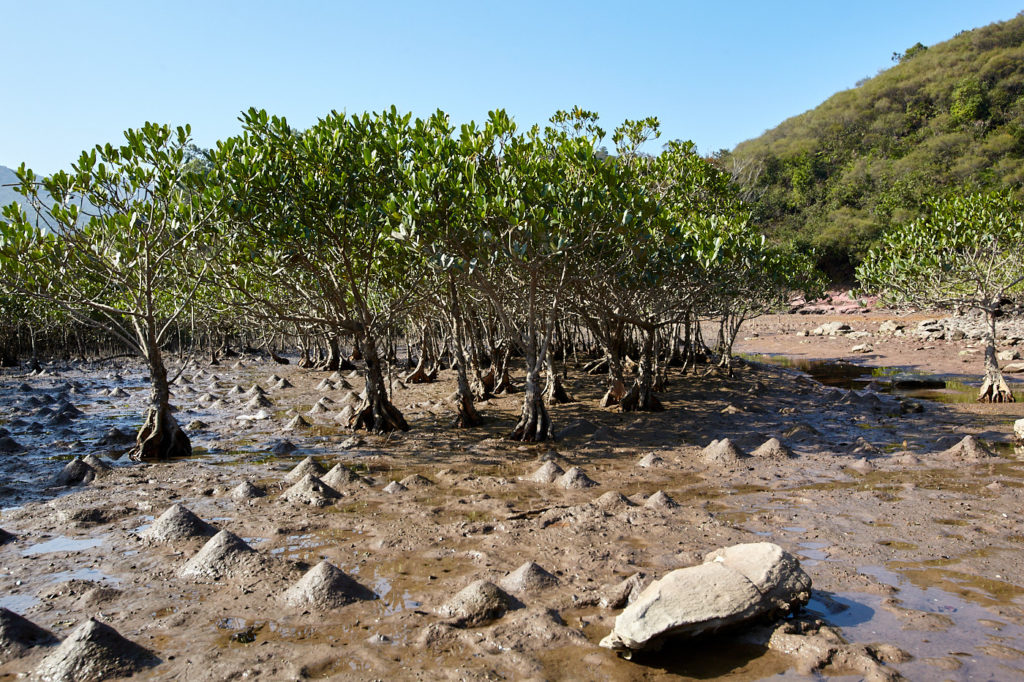
The stream widens out into an estuary replete with mangroves and mudskippers.
The trail crosses the stream several times before emerging from the forest. It continues gradually downhill over outcrops of sandstone, mudstone and other sedimentary rocks towards a small inlet called Sam A Wan. Approaching the coast the stream opens out to become a much wider course whose width and depth vary according to the tides and seasonal rains. The mangroves are lush here and at low tide, you can squelch across the flats looking for crabs and mudskippers while they do their heartfelt best to avoid being found.
Noodles on the terrace
The trail clambers around the edge of an outcrop of striking red sandstone before bending north across a broad headland and a narrow manmade causeway to the hamlet of Sam A Tseun. The causeway creates a tidal pool on the far side of which is a small restaurant called the Fook Lee Teahouse. At weekends and public holidays, you can replenish your water supply and enjoy a bowl of noodles on the terrace looking out over the bay towards Double Island, while egrets forage for food in the pool below.
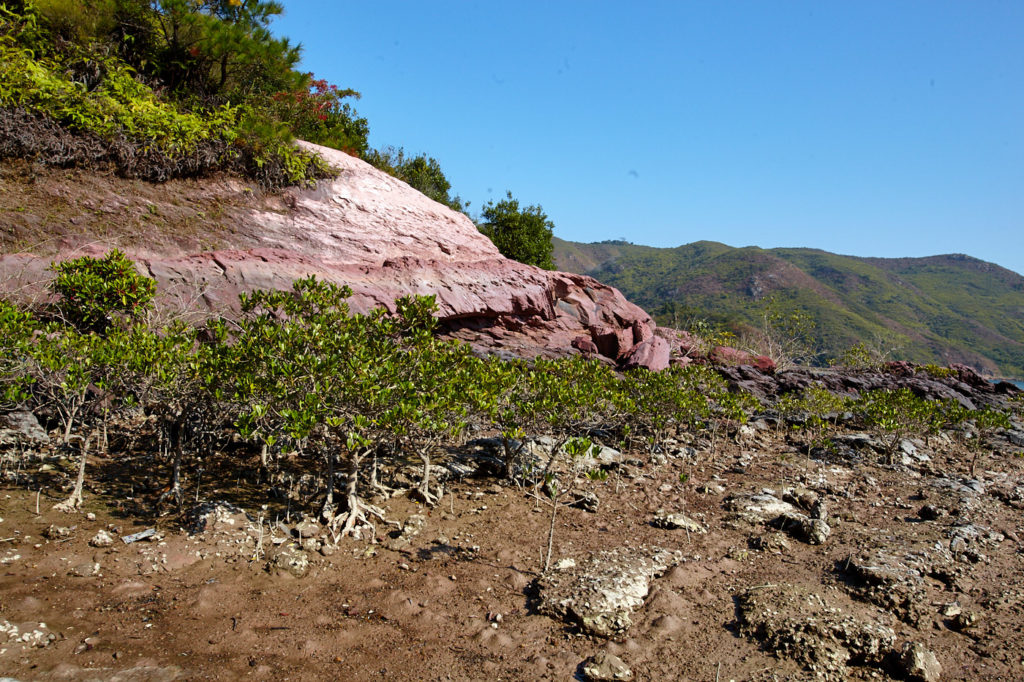
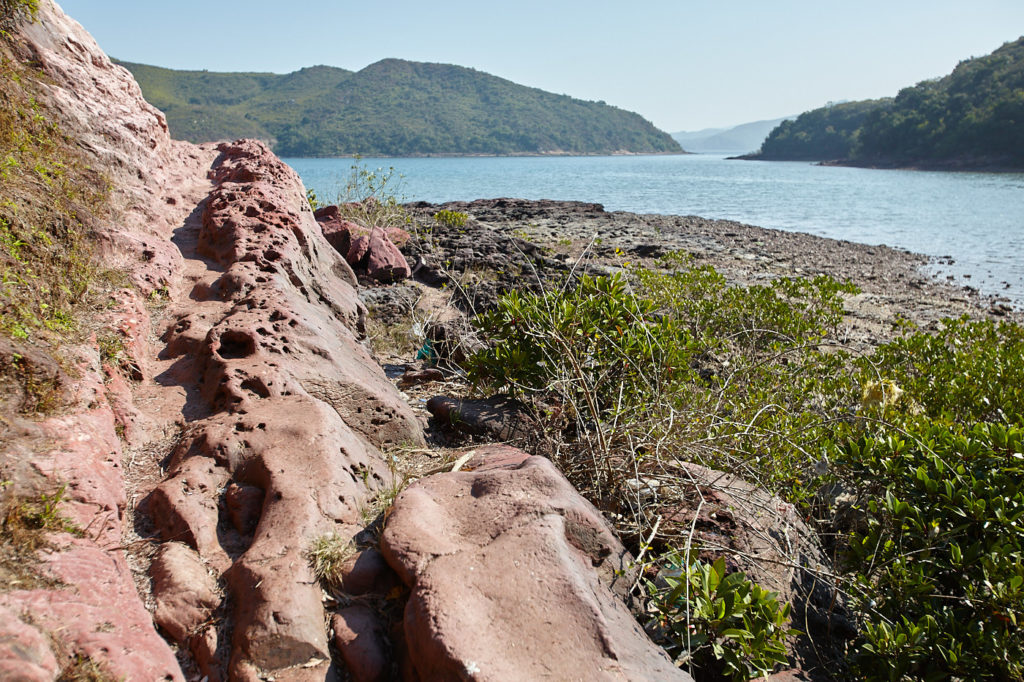
The trail follows an attractive red outcrop (top) before rounding into Sam A Tseun (below) where, at weekends and public holidays you might find a nourishing bowl of noodles.
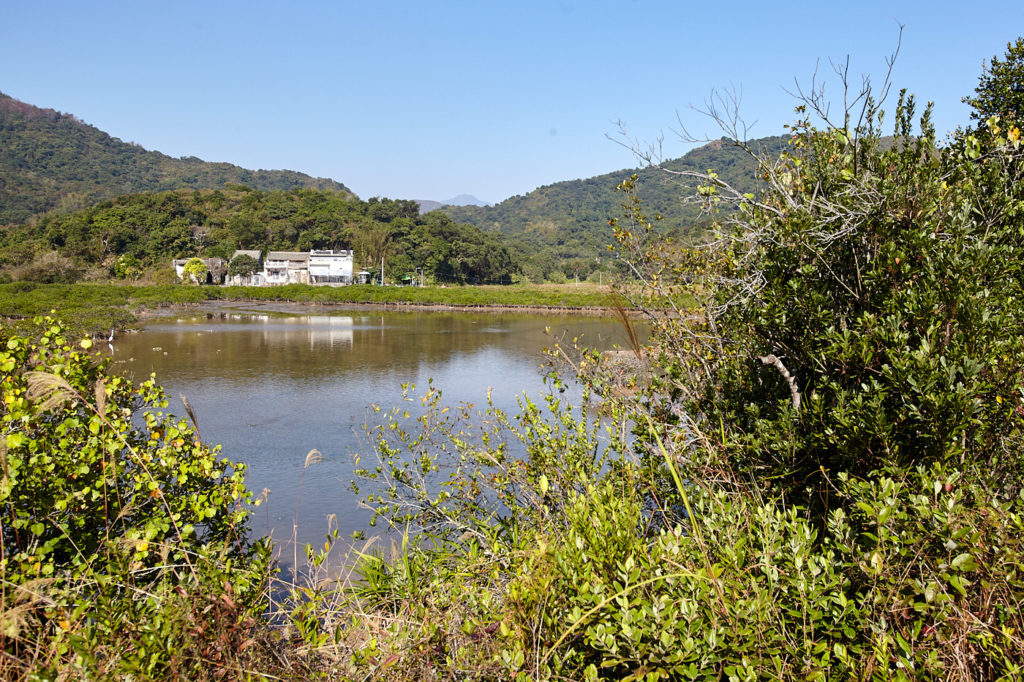
At Sam A Tseun the trail rejoins the Tiu Tang Lung path. From here it is an easy path, mostly concrete surfaced all the way to Lai Chi Wo. Passing, on the way, a large and unruly tangle of mangroves that boasts all eight of the mangrove species that reside in Hong Kong. The most spectacular of these is the heritiera littoralis, or looking-glass mangrove, whose gnarled, twisted roots and buttress trunks bring to mind scary tales of elves, goblins and wicked witches.
An old boardwalk once offered an alternative route through these trees but this is now closed off and a stern notice reads, “No Entry – Tree Failure Ahead”. Failure meaning, of course, that large branches could fail to remain on the tree, and land on any unfortunate soul who was walking beneath.
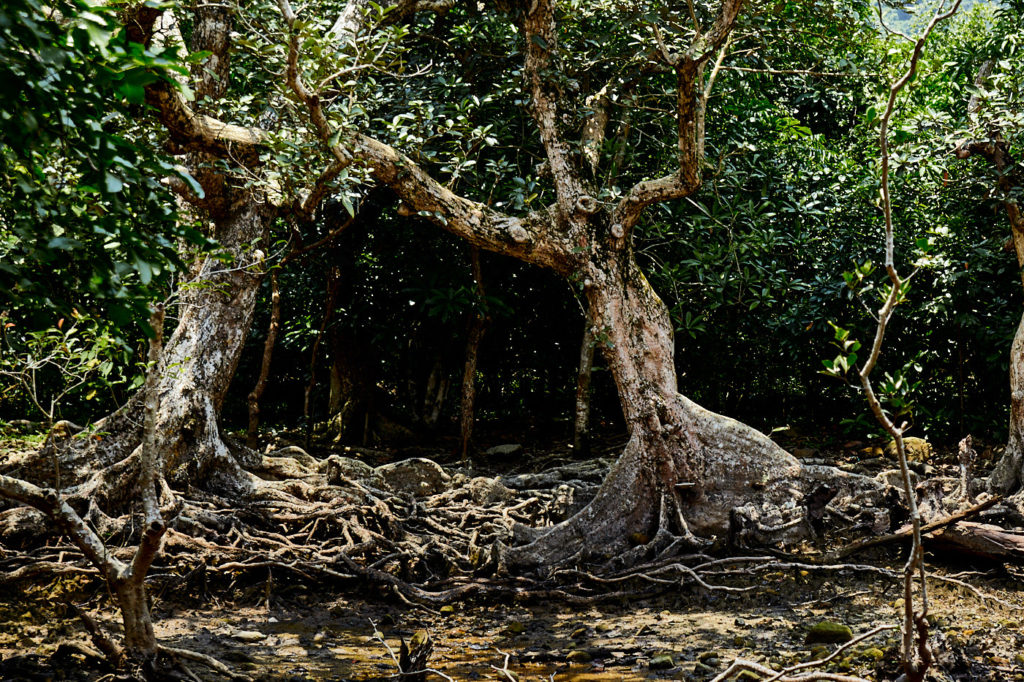
Some of the ancient, spooky trees near Lai Chi Wo.
Beyond this primeval forest, the path crosses some rather tidy rice fields before passing the square in front of Lai Chi Wo. The village takes its name from the wild lychees that used to grow in the area. Though many of the trees were cut down they still grow in the fung shui woods that girdle the west of the village.
Across the square are a temple and the old school house, and to the right an old banyan tree hung with red paper lanterns (main picture). The village itself has a history of over 300 years and was one of the largest in the New Territories. At its peak in the 1950s, it was home to about 450 residents who lived by farming, fishing and the manufacture of bamboo products. The buildings are mostly old but a handful of newer ones, along with the rice fields, betray the fact that villagers do still return.
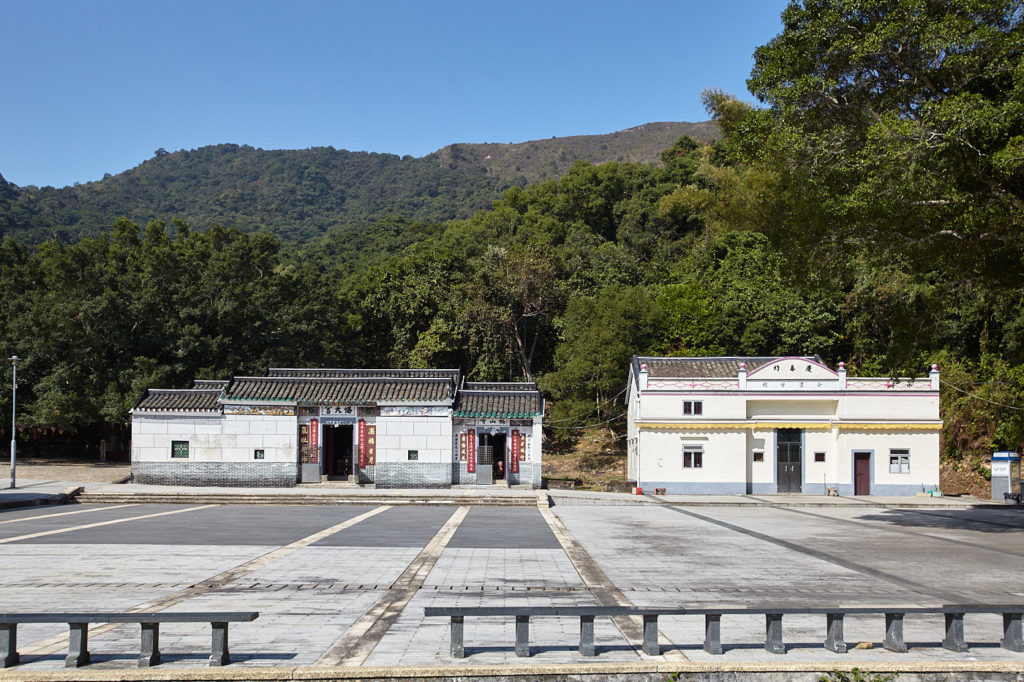
The temple and the old school house at Lai Chi Wo.
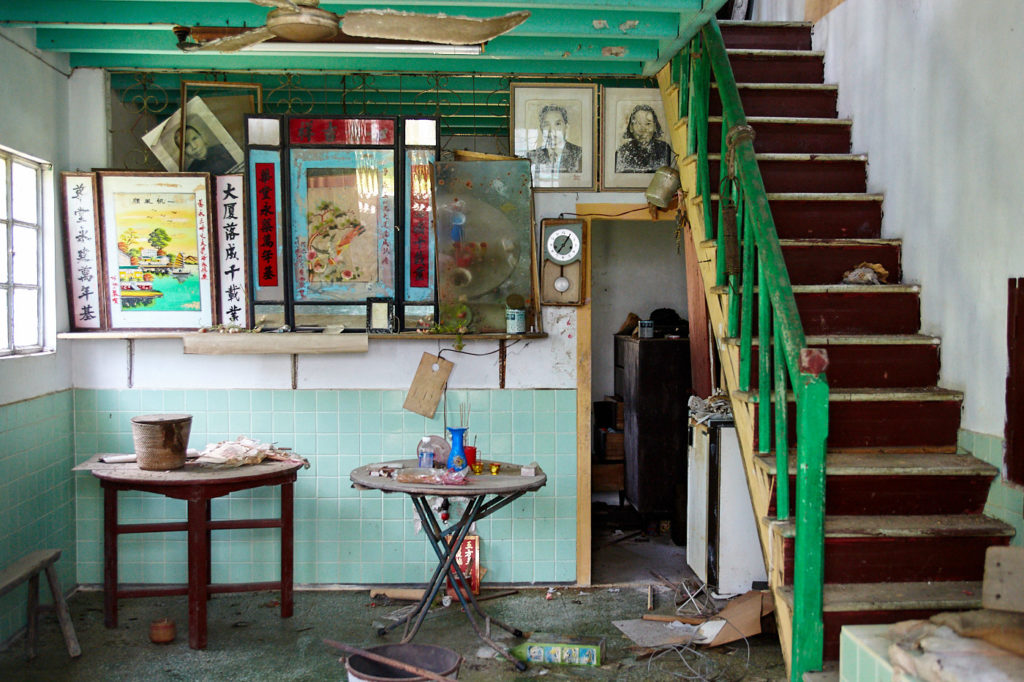

Although some houses are still used many have been abandoned for years (left). In recent years some residents have returned, part-time, to grow rice and other crops.
At weekends and public holidays, you can often find a fortifying bowl of noodles and bottled water. You can also pay a visit to the heritage centre which features exhibits of rock samples, farm tools and local history. Mid-week there is no guarantee there will be anyone in the village at all save for a few curmudgeonly dogs.
There are several ways out of Lai Chi Wo, one of which is to head back across the rice fields and pick up the path to the village of Mui Tsz Lam. The two rows of houses, probably built in the 1960s, are all abandoned and the forest is now reclaiming the children’s playground and its rusted climbing frames.
From Mui Tsz Lam the trail heads uphill. Although the path is still clear the forest cover is quite thick and the light gloomy. You sometimes have to duck and weave as branches reach out to snag your clothes or whack you on the head. Old ancestral graves line the path to the left and, in the rainy season, banyan trees shoot new blood-red roots down towards them.
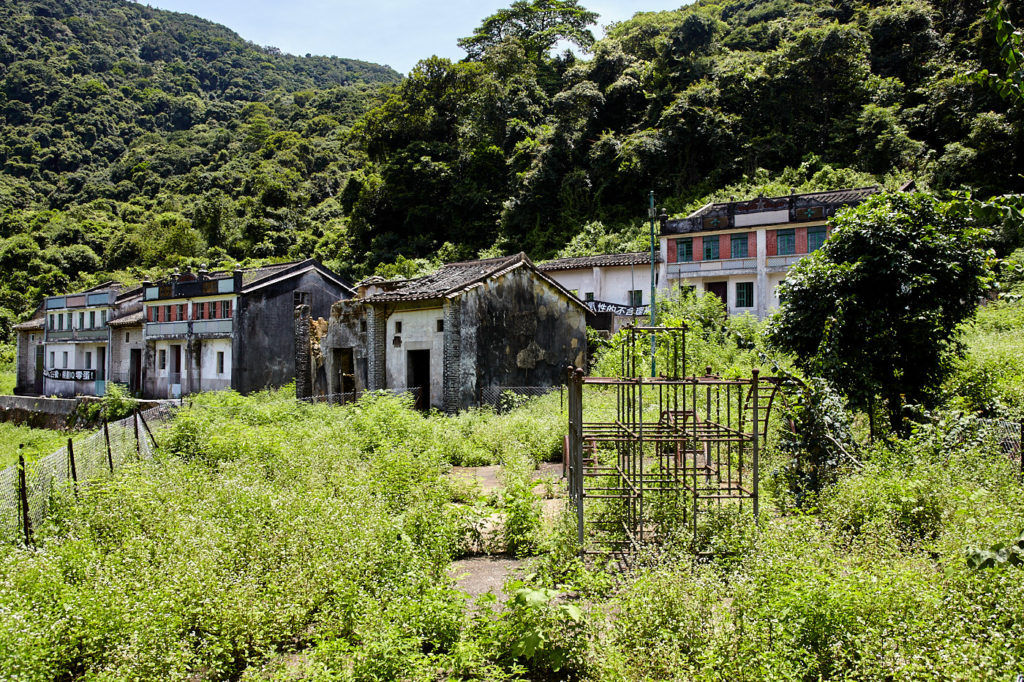
Mui Tsz Lam is completely abandoned.
A less macabre way out from Lai Chi Wo is to pick up the Tiu Tang Lung Path, passing through the fung shui woods from the western side of the village. Although more direct the path is much steeper and, after heavy rains, can be flooded in places. If you are athletic you may be able to hop the rocks but if you have a pack on your back you might just as well wade through. It’s not deep and it cools the feet quite pleasantly.
A longer but probably my favourite way is to continue north to So Lo Pun and Yung Shue Au around the northeastern corner of the New Territories, opposite the mainland Chinese port of Yiantian.
The compass is locked
Follow the path that heads north along the coast. About 300 metres past the pier the path turns northwest into forest and begins to ascend. It’s not a long climb but it is steep in places. The cranes at Yiantian had been visible in the distance even before we reached Lai Chi Wo, but from the top of this hill, the rumble of industry becomes quite distinct as container ships and tower blocks fringe the north shore of Sha Tau Kok Hoi. On the hillside opposite several ancestral graves can be seen while below is a broad valley and the village of So Lo Pun.
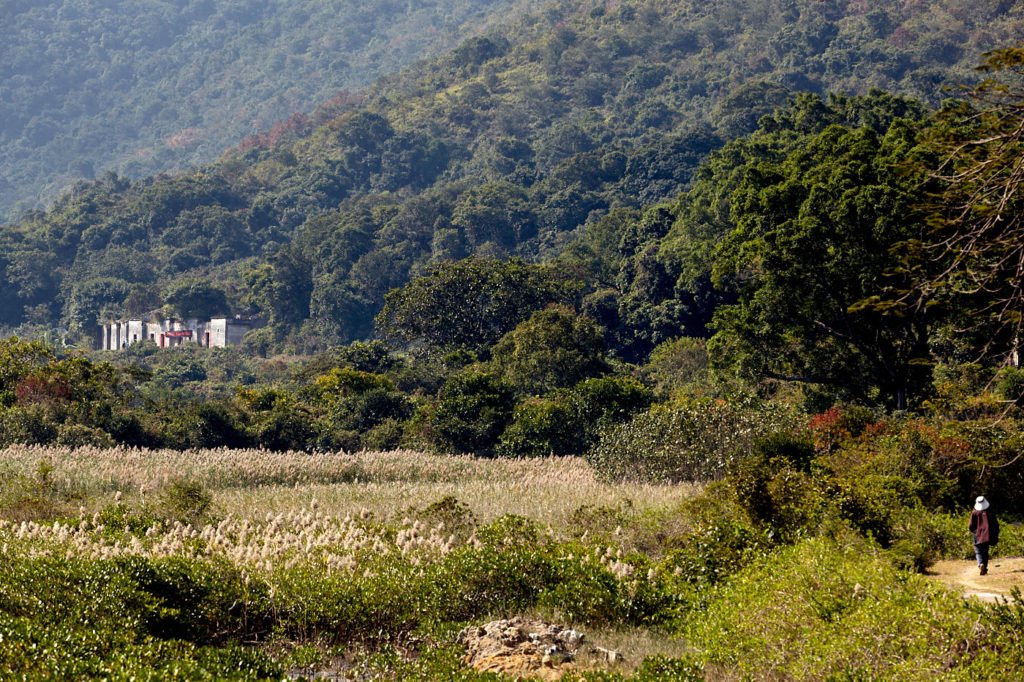
So Lo Pun, in the distance, is the most remote village on the trail. A village has existed here for over 1100 years but the village’s name is comparatively recent, it means “the compass is locked”.
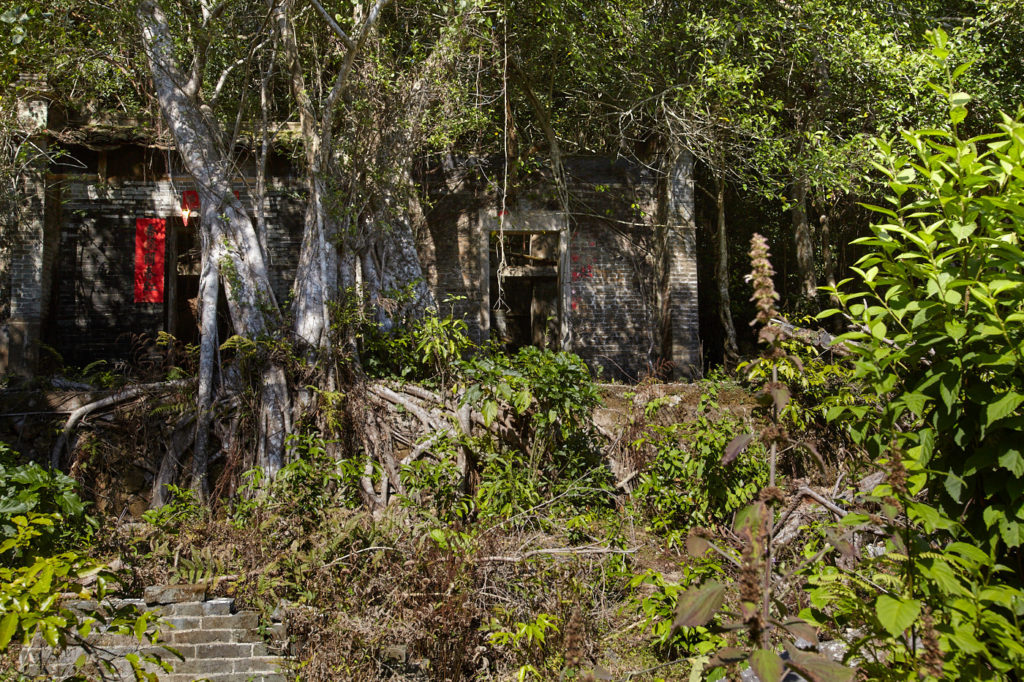
Some of the overgrown houses in So Lo Pun.
There are numerous abandoned ghost villages in the latter part of the walk but So Lo Pun is the only one that is actually claimed to be haunted. None of the distance markers on the trail mention So Lo Pun and there have been reports from hikers that compasses stop working in the village. Indeed the name So Lo Pun literally means “the compass is locked.”
It is certainly the most remote and probably one of the oldest villages. Inhabited as far back as 872CE it consists of two rows of traditional blue brick houses that have been mostly reclaimed by nature. There is one newer building at the end, which does look like it is still occasionally used.
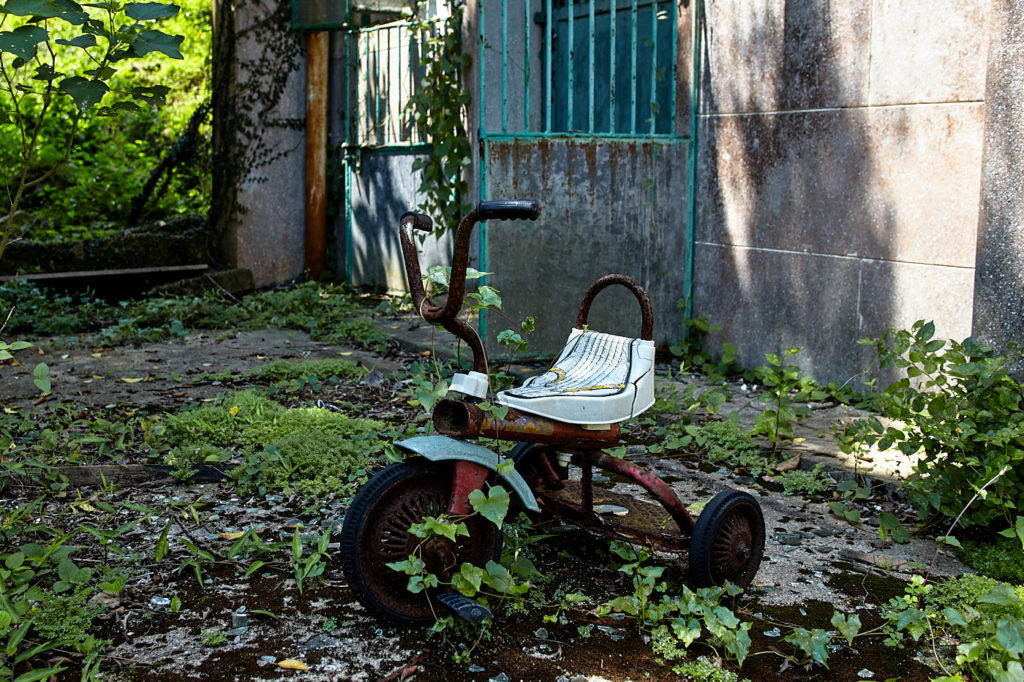
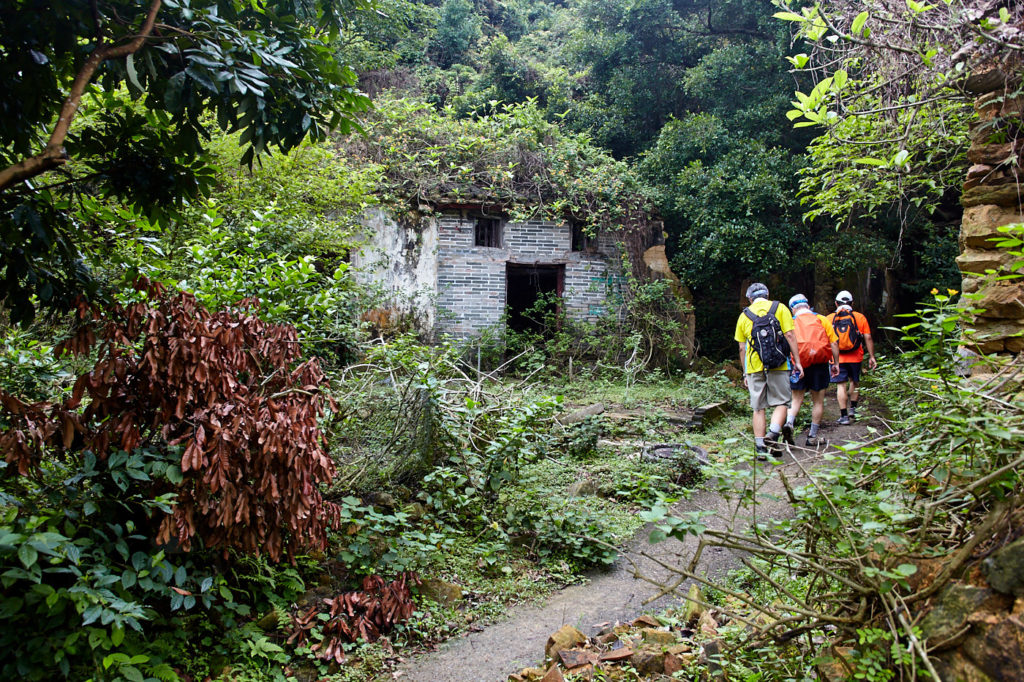
An abandoned children’s tricycle and even the old storehouses at Yung Shu Au are creepy.
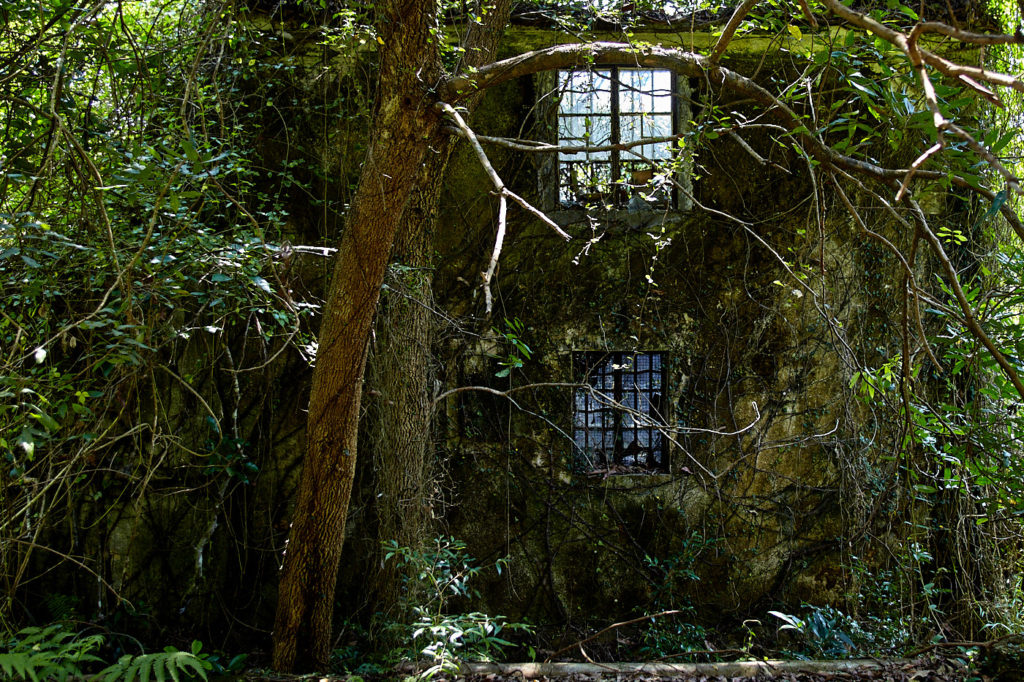
The only remaining wall of a former home.
The trail leads over another hill to the village of Yung Shu Au. This one is not as old as So Lo Pun but it does look considerably spookier. In its heyday, the village would have been a pretty little place, set in a narrow valley and surrounded by tall trees. Today all the houses stand empty. The newer ones, probably built in the 1960s, still contain remnants of the lives of the people who once lived in them. Tables, chairs, old picture frames and, in front of one, a child’s tricycle stands rusted and forlorn with weeds growing over it. Even the old storehouses, with their gaping doors, piercing eye-like upper windows and tangle of matted foliage are creepy.
The trail slips between two of these and up a muddy flight of steps before turning southwest, following the southern shore of Shau Tau Kok Hoi, or Starling Inlet, towards Kuk Po.
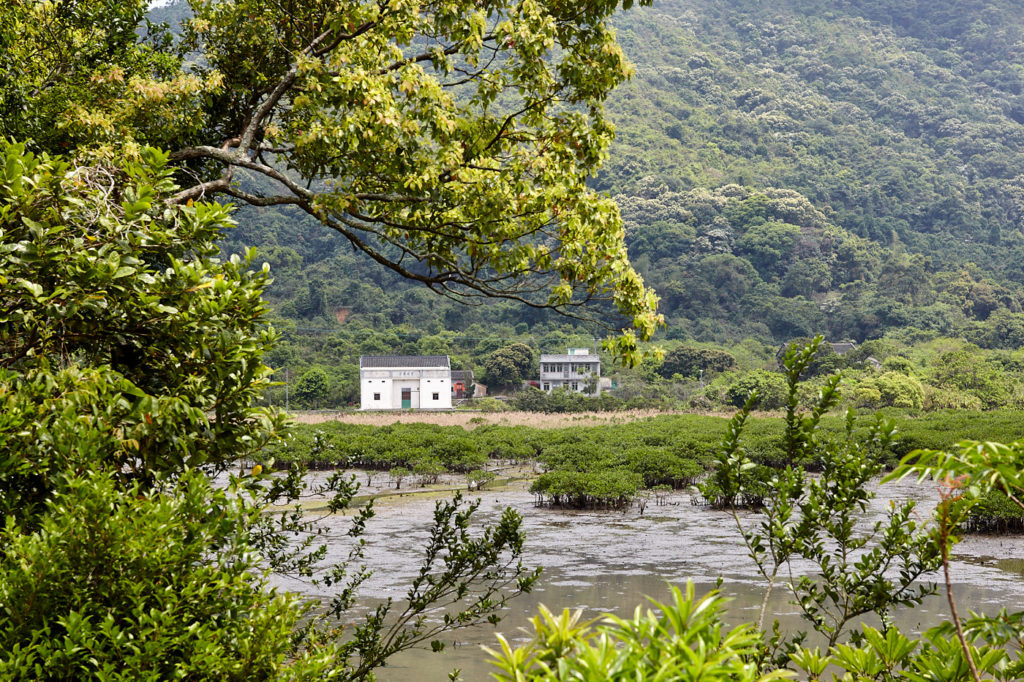
Old buildings near Kuk Po Lo Wai.
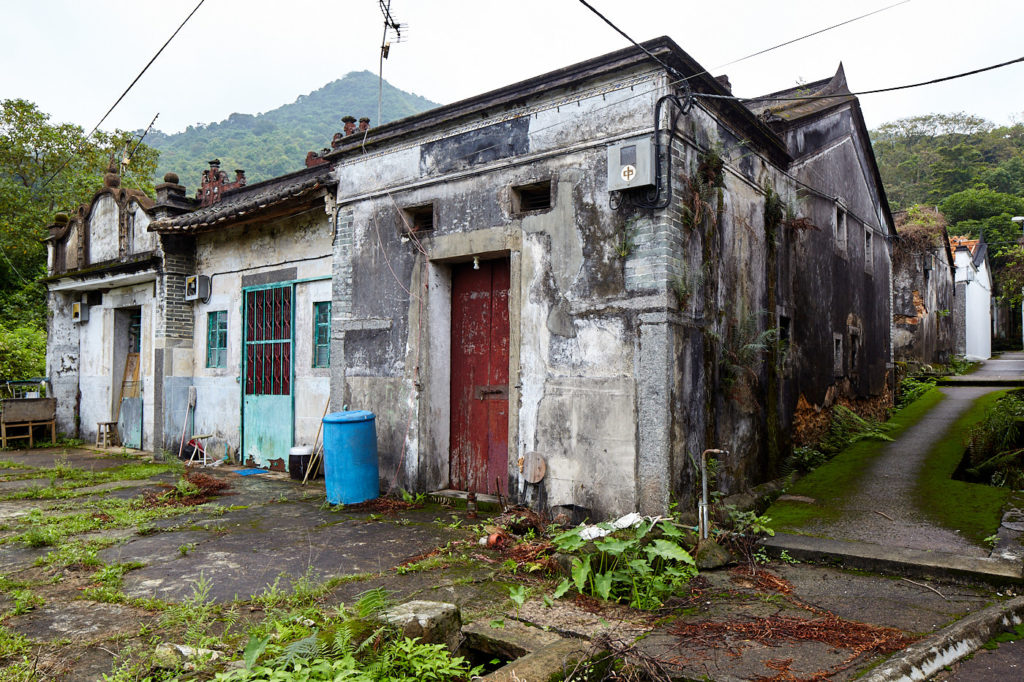

Tsim Kong Tung village (left) and Kuk Po San Uk Ha village.
The area of Kuk Po has been inhabited for over three centuries. It consists of a collection of about half a dozen small settlements situated around a large marshy area enclosed by green hills to the south and Shau Tau Kok Hoi to the north. The marsh itself is popular with egrets, butterflies and dragonflies whose numbers vary according to season. It is also popular with feral cattle.
The main occupation of the people who lived here was farming, and the cattle are descendants of those that were abandoned, along with the houses when the villagers left. A concrete path around the perimeter of the marsh connects the settlements, some of which are still occasionally occupied and maintained.
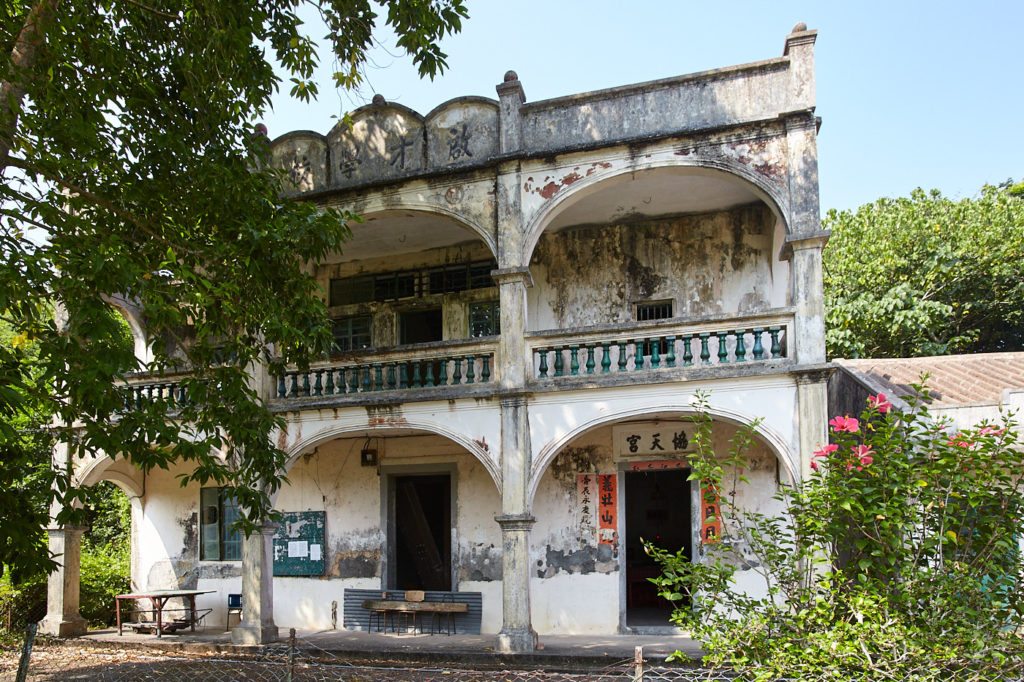

The old school building near Kuk Po San Uk Ha (left) and Fung Hang village.
The most interesting of these are Kuk Po Lo Wai, which is about halfway around, and Tsim Kong Tung, with its narrow lanes, several tidy rows of houses, and well-maintained shrines. The latter is a short walk along the Tiu Tang Lung Path, which joins the perimeter path just beyond Kuk Po Lo Wai. Also worth a look is the old schoolhouse at Kuk Po San Uk Ha, which was built in 1928 and was inspired by the Guangzhou Military Academy School.
The path continues along the shore of the inlet past the village of Fung Hang and over one last small hill before rejoining Bride’s Pool Road for the last 500 metres to Luk Keng, a collection of three partially inhabited villages with some well-kept houses and a temple. There are two restaurants by the minibus stop.
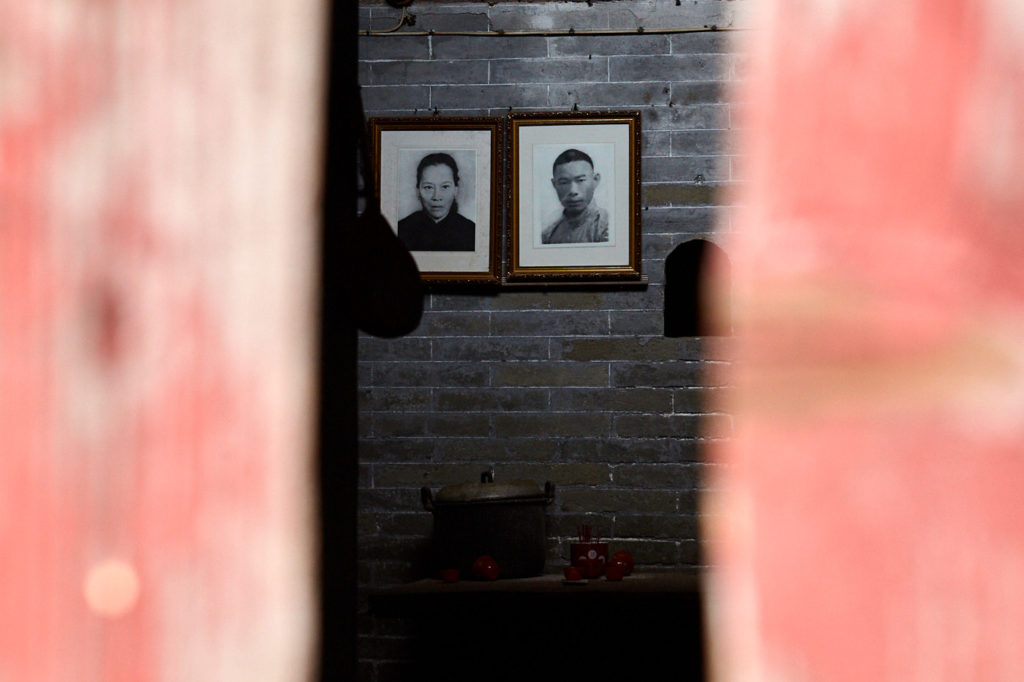
Photos in an abandoned building at Luk Keng.
The total distance is just approximately 17 kilometres. There are a few hills to climb after Lai Chi Wo but nothing too challenging.
Getting there and back
You can go around the hike in either direction but if you are relying on public transport I strongly recommend starting at Bride’s Pool or Wu Kau Tang. This is because of the greater frequency of the Luk Keng minibus service.
The MTR East Island line serves Tai Po and Fanling stations.
From Tai Po Market station the green minibus route (GMB) 20R serves Bride’s Pool and Wu Kau Tang. It only runs a few times a day for the timetable see http://www.16seats.net/eng/gmb/gn_20r.html
On Sundays and public holidays the KMB route 275R runs from Tai Po Market station to Bride’s Pool every 15-20 minutes between 08.30 – 18-00.
The green minibus 56k operates between Luk Keng and Fanling station every 15-30 minutes between 06.50 and 19.30 http://www.16seats.net/eng/gmb/gn_56k.html
All these services are pretty crowded at weekends and public holidays.
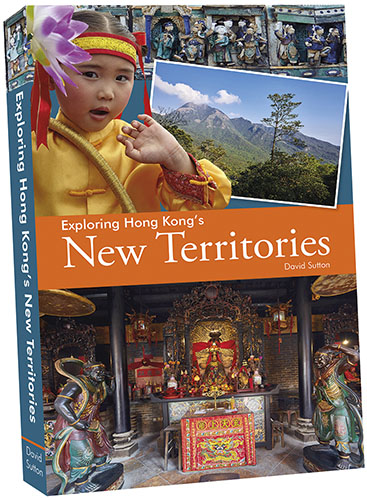
Exploring Hong Kong’s New Territories
The New Territories represents around 85% of Hong Kong’s total land area. It is an area of coastal wetlands and mountains boasting a history of more than a thousand years. There are many ancient monuments, well-maintained hiking trails and outlying islands with old fishing communities. Yet to most visitors, it remains largely unknown.
I spent the Covid years researching, writing and photographing it. Exploring Hong Kong’s New Territories is 332 pages with around 400 colour photographs plus maps and directions. More information here | Buy here